Kongobuji Temple, Koyasan- Headquarters of Shingon Buddhism
Purchases made through links earn us a small commission, at no extra cost to you.
As soon as we arrived at Mt. Koya, I was excited to begin exploring the temples and shrines of this sacred Buddhist site.
We started our day in Koyasan by visiting Kongobuji Temple, the beautiful headquarters of Koyasan Shingon Buddhism.
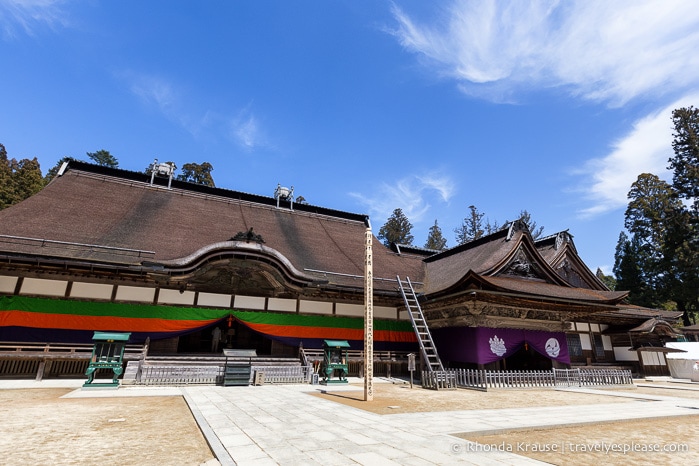
About Kongobuji Temple
Kongobuji Temple is the result of combining two temples, Kozanji and Seiganji, into one. In 1869, the amalgamated complex was renamed Kongobuji and made the administrative head temple of Koyasan Shingon Buddhism.
This sprawling temple consists of a main hall, betsuden (temple annex), tea room, meditation hall, scripture storehouse, bell tower, mausoleum, historic kitchen and rock garden, just to name a few.
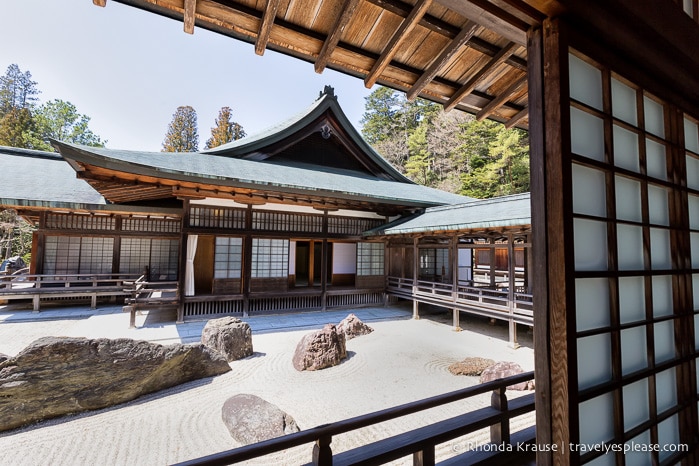
Our Visit to Kongobuji Temple
Our visit to Kongobuji Temple started at the bottom of a lengthy staircase. Before we could get a glimpse of this important temple we had to make our way up to the large gate that loomed before us.
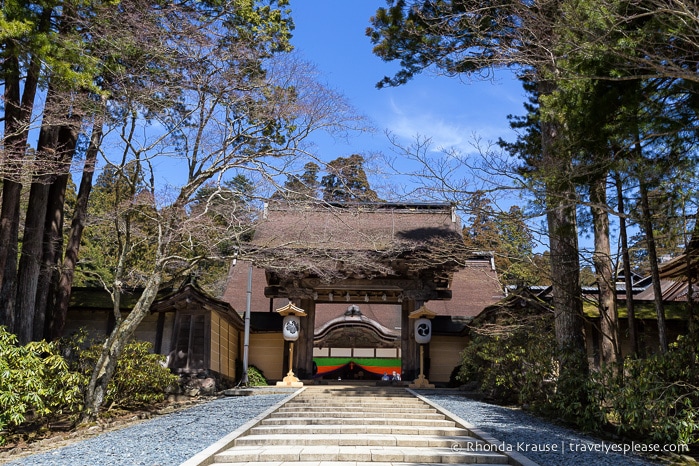
The main gate is the oldest building in Kongobuji, having been rebuilt in 1593. In the past, this front gate was reserved for chief priests of Koyasan, royalty and the Emperor.
Knowing this, I felt a little special walking through the gate and into the courtyard of Kongobuji Temple.
Immediately I was impressed by how large the temple was. Yet, as big as it looked on the outside, I was surprised by just how large it was on the inside.
Before we went in though, we spent some time wandering around the courtyard in front of the temple.
The first thing that caught my eye was a small building, off by itself to the left of the main gate. This was the Kyozo, or scripture storehouse. The Kyozo was built separately from the main hall so that important documents would be safe in case of a fire.
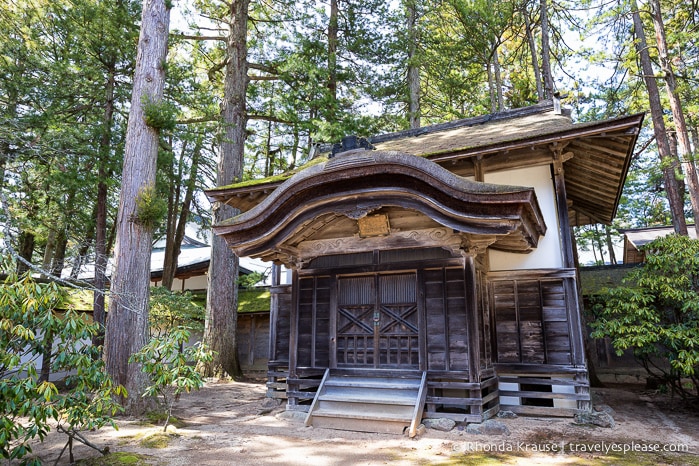
Next, I went back to the main gate to admire the woodwork and noticed another small building to the right of it. This was the Shoro, or bell tower. On first glance, I would not have guessed it was a bell tower, since it was a lot shorter than the bell towers I had seen in Europe. The Shoro has been designated a prefectural cultural property largely because of its unique construction.
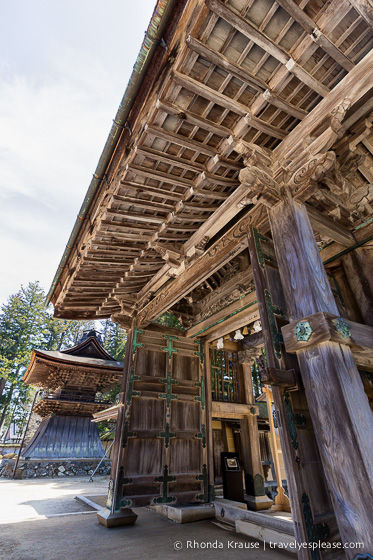
After getting to know some of the smaller buildings of the temple, I finally went to view the main building. The Great Hall is the first thing you see after you pass through the main gate, but it wasn’t what I thought was the most beautiful part of the building. For me, the Daigenkan stole the show.
The Daigenkan is the main entrance to Kongobuji Temple. Much like the main gate, this entrance can only be used by Koyasan high officials, the Emperor and Imperial Family.
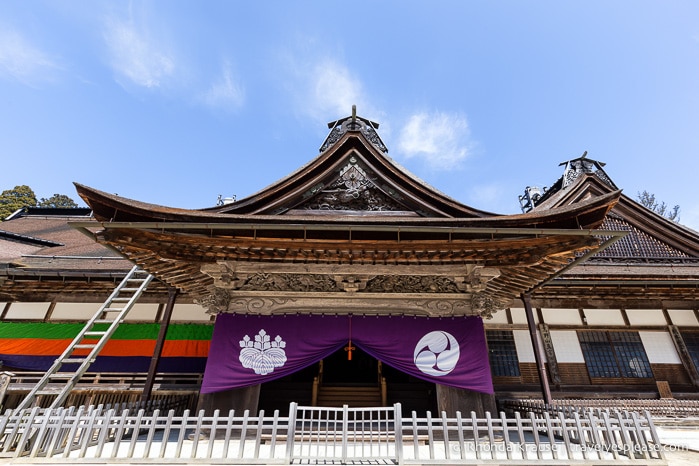
Having spent a good deal of time looking at the outside of the temple, we finally made our way inside.
The interior was pretty typical of Japanese Buddhist temples. It had long hallways that circled around a large space, divided into smaller rooms by sliding doors.
The sliding doors were anything but typical though. Each room had a different design showcasing paintings of cranes, willow trees, flowers and scenes from the four seasons. There even was a room where the walls were covered in gold leaf! While we really enjoyed admiring the paintings on the screens, I was disappointed that photos weren’t allowed (I hate that rule!)
After viewing some of the temple’s rooms, we followed the hallway outside to the Banryutei rock garden. I immediately noticed how large it was. At 2349 square metres, it’s the largest rock garden in Japan!
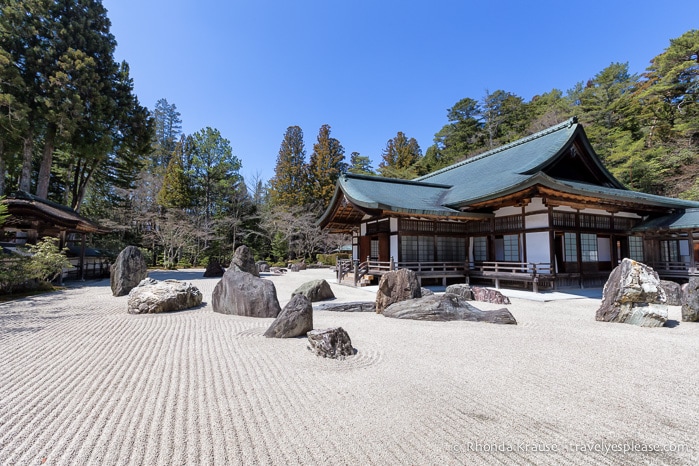
While I tend to prefer manicured gardens with grass and flowers, I still appreciated the simplicity of the rock garden, even though I didn’t quite get its design. The large rocks are supposed to form a pair of dragons that are emerging from a sea of clouds to protect the Okuden (a section of the Kongobuji).
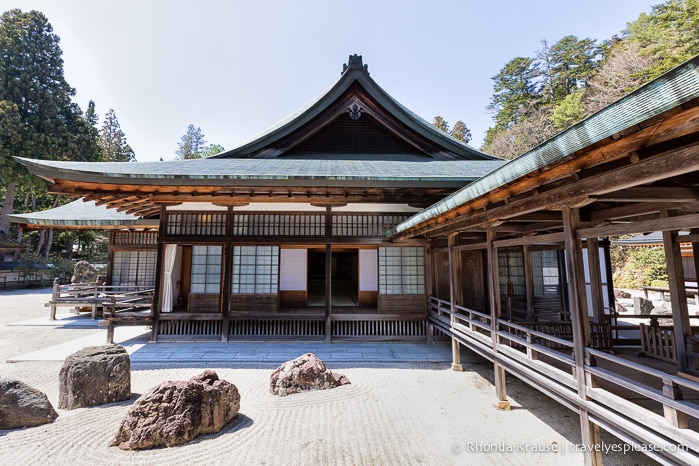
The last area of the temple we visited was the kitchen. The kitchen was very large, as it’s designed for preparing meals for big groups of people. You can also tell it’s very old, having been used by monks since the Edo period.
Final Thoughts About Kongobuji Temple
Kongobuji Temple was the only temple at Koyasan we paid to go inside. We picked this one specifically because of the painted screen doors and they did not disappoint.
It was also kind of neat that the temple didn’t feel like a museum. Well, in some ways it did, but you could definitely tell that this was a working temple. As we wandered around, monks were carrying on with their administrative tasks and other daily duties.
Kongobuji is definitely worth dedicating some time to see during a day in Koyasan!
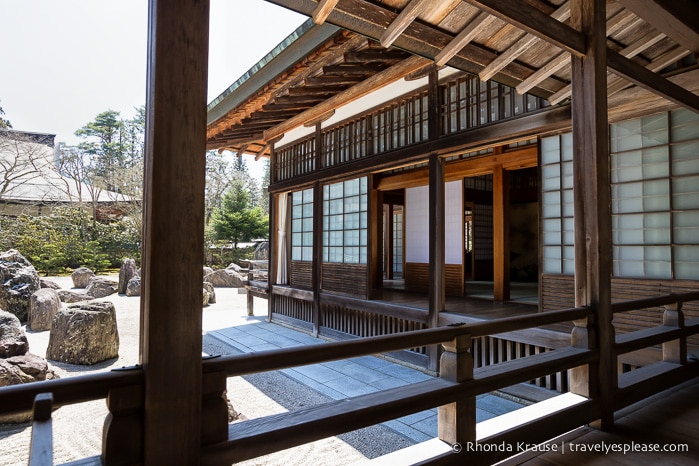
Tips for Visiting Kongobuji Temple
Location: Kongobuji is located in the centre of Koyasan, at 132 Koyasan.
Opening Hours: Kongobuji Temple is open daily from 8:30 am- 5:00 pm (last admission 4:30 pm).
Admission Fees: Admission to Kongobuji Temple costs ¥500.
Information was updated September 2022, but can change without notice. Please confirm directly with service providers.
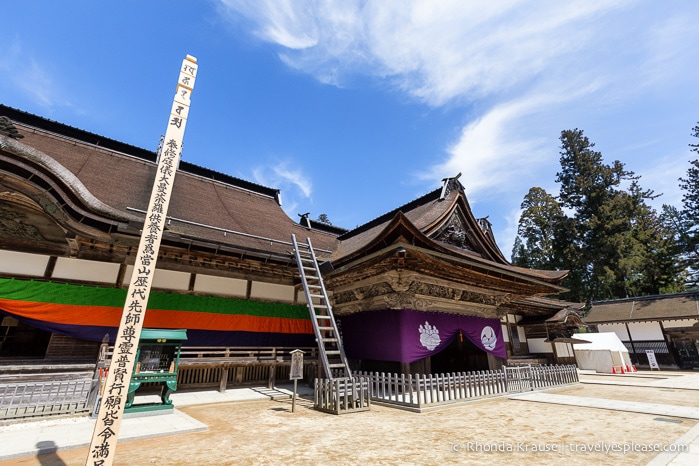
Accommodations in Koyasan
There are 52 temples at Koyasan that provide traditional Japanese lodging.
Here is a small selection of temple accommodations available on Booking.com, our trusted booking site. Accommodations booked through the included link earn us a small commission, at no extra cost to you, and help support this website. Thank you!
More Japan Destinations and Travel Guides
- Danjo Garan- Koyasan’s Central Temple Complex
- The Okunoin- Koyasan’s Ancient Cemetery
- Exploring Nachisan- A Sacred Mountain Site on the Kumano Kodo Pilgrimage
- Two Weeks in Japan- Our Itinerary’s Hits and Misses
